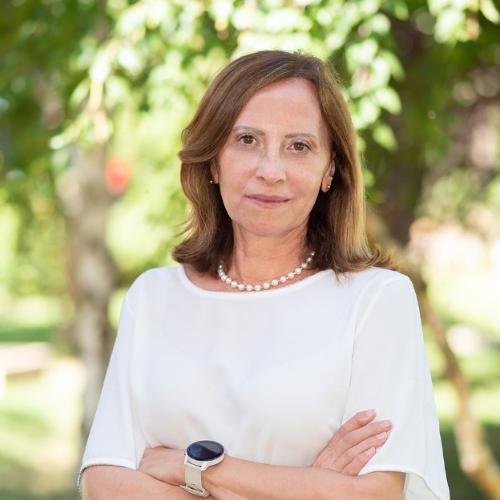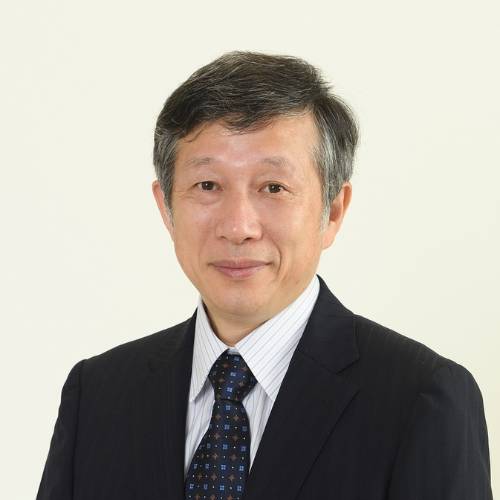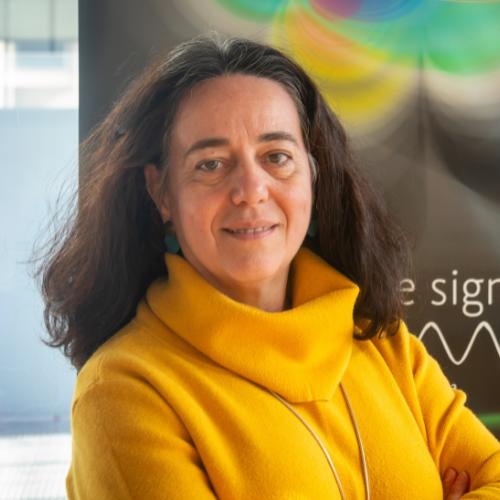Keynotes
Keynote speaker # 1

Yolanda Benito
CIEMAT, Madrid, Spain
“SUSTAINABILITY IN SCIENTIFIC INFRASTRUCTURES”
Abstract:
Large scientific infrastructures must integrate sustainability into their strategies, therefore including detailed plans to reduce their environmental impact.
Reducing the environmental impact generated by research is an aim already reflected as main objective of major current scientific projects. Scientific infrastructures have to deal with the following challenges related with sustainability and life cycle evaluation: minimizing the environmental impact; pursuing actions and technologies aimed at saving energy and its reuse and identifying and developing technologies that can contribute to mitigate society’s impact on the environment, among others.
The reduction of environmental impact and the promotion of sustainable development are two of the key factors that are considered in the evaluation process for future infrastructures and research projects. For years, the term environment was associated only with nature and preservation of ecosystems. However, this definition has recently been expanded to encompass urban landscapes and socio-economic aspects accompanying them. It is mandatory that the scientific community take a more global approach when planning the future of research.
When planning and operating a scientific-technical facility, it is critical to consider a sustainable design in accordance with regulatory compliance and international standards, the management of resource consumption, the minimization of impacts, define a sustainable operation, assess its contribution to the environmental conservation, promote the participation of the community, guarantee transparency and consider climate change adaptation measures. The integration of these aspects not only reduces the environmental impact of the facilities but also reinforces their reputation as responsible and sustainable projects.
Bio:
PhD in Chemical Sciences, Master Degree in Leadership and Public Management. General Director of CIEMAT (Center for Energy, Environment and Technology Research) since May 2022. Deputy General Director for Environment at CIEMAT (2012-2022). Head of the Public Private Partnerships Unit at the Ministry of Science and Innovation (2008-2012). Main highlight during this period: design and implementation of instruments to strengthen research and innovation for Public-Private Cooperation to develop innovative public procurement and coordinate research and innovation activities with regional governments. Chief of the Unit of Energy and Environmental technologies at CIEMAT; involved in several International and National R&D+I projects devoted to applications and technologies related with the energy and environment. Member of European and National Scientific Committees and Alliances, author of chapters of books, papers in scientific journals (SCI); wide participation in national and international symposia. Vicepresident of ENRESA, the Spanish Public company for nuclear waste management.
Keynote speaker # 2

Tadayuki Takahashi
Kavli Institute for the Physics and Mathematics of the Universe (Kavli IPMU), The University of Tokyo
“Toward New Frontiers: Deploying State-of-the-Art Astronomical X-ray and Gamma-ray Detectors into Interdisciplinary Fields”
Abstract:
Research aimed at addressing profound scientific questions about the universe has driven the development of cutting-edge detectors with exceptional performance, achieved through an unwavering pursuit of sensitivity and resolution. We have successfully applied technologies originally developed for X-ray and gamma-ray space observations—including multipixel superconducting microcalorimeters, large-area CdTe semiconductor imagers, and advanced X-ray astronomical analysis techniques—to interdisciplinary fields such as atomic physics and non-destructive elemental analysis using negative muons. Furthermore, the semiconductor Compton camera, designed to revolutionize MeV gamma-ray observations, has proven remarkably effective for precise polarization measurements of X-rays from highly charged heavy ions and gamma rays from excited states of nuclei.
Beyond applications in physics, we have applied these technologies to cancer research, particularly in nuclear medicine. Key applications include visualizing pharmacokinetics to accurately predict therapeutic efficacy and potential side effects in treatments like alpha-particle radionuclide therapy, as well as facilitating the detection of microcancers.
In this talk, I will highlight examples of collaborative research with interdisciplinary partners that have not only advanced fundamental scientific studies but have also opened new frontiers in applied research, spanning a wide range of fields from elemental analysis to medicine.
Bio:
Tadayuki Takahashi is a Project Professor at the Kavli Institute for the Physics and Mathematics of the Universe (Kavli IPMU) at the University of Tokyo. He is also an Emeritus Professor at the University of Tokyo and JAXA. Before joining Kavli IPMU, he was at JAXA/ISAS, where he significantly contributed to developing X-ray and gamma-ray detectors for Japanese X-ray satellites, including Suzaku and ASTRO-H (Hitomi). He has been especially successful in advancing technologies for CdTe (Cadmium Telluride) radiation detectors, including the CdTe double-sided detectors and pixel detectors. These advancements and his proposed detector concepts are foundational for modern CdTe and CZT detectors. In parallel with research in high-energy astrophysics, he leads interdisciplinary research initiatives at Kavli IPMU, leveraging advanced detector technologies across diverse fields, such as atomic physics, nuclear physics, element analysis, and urgent research topics of medicine, such as cancer research. In 2017, he was awarded the IEEE NPSS Glenn F. Knoll Radiation Instrumentation Outstanding Achievement Award for contributions to the development of CdTe semiconductor devices and their applications to high-energy space astrophysics. He is an accomplished author and co-author of over 500 publications.
Keynote speaker # 3

Alicia M. Sintes
“Gravitational waves with ground-based detectors”
Abstract:
In this talk, I will provide an overview of the history of LIGO and Virgo, focusing on key advancements in precision measurement and the challenges faced by these kilometer-scale interferometers that make gravitational-wave detections possible. I will summarize the latest results from the LIGO-Virgo-KAGRA detectors, starting with the groundbreaking first detection in 2015, and discuss their far-reaching implications. Additionally, I will outline the upcoming schedule and planned upgrades for the next data-taking runs. The talk will conclude with a look ahead at the future evolution of ground-based astronomy over the coming decades.
Bio:
Alicia M. Sintes (Menorca 1969) holds a PhD in Physics from the University of the Balearic Islands (UIB) and is a Full Professor in the area of Theoretical Physics. Her research focuses on the field of gravitational wave astronomy. She joined the LIGO Scientific Collaboration (LSC) and GEO in 1997, and is a member of the LIGO-LSC council and the GEO executive committee, as well as a member of the LISA Consortium and the Einstein Telescope.
Sintes was named “Beloved Daughter of Sant Lluís” in 2018 and has received numerous awards, including the Ramon Llull award from the Government of the Balearic Islands, the “Sincronizados” award from the SINC Agency, and recognition as a member of the Spanish Science Selection by QUO, for her contribution to the discovery of gravitational waves. She has supervised nine doctoral theses and has published over 400 scientific articles.
Sintes has a strong track record of international leadership: she served as co-chair of the LIGO-Virgo continuous waves data analysis search group (2016-2018), as a member of the LIGO Science program committee (2019-2022) defining the scientific program of the collaboration, the LISA parameter estimation task force (2007-2010), and the GEO detector characterization working group (2001-2004). Furthermore, she has been a member of the European Space Agency’s Fundamental Physics Advisory Group (2007-2009) and of the Fundamental Physics Roadmap Advisory Team (2009-2010) developing recommendations on the Cosmic Vision program. She was a member of the G8 group of the “Red de infraestructuras de Astronomía” (2007-2009) and of the “Red de Interlocutores Universitarios” for the “7th Programa Marco, grupo de Seguridad y Espacio, del Servicio Europa I+D de la CRUE” in 2006. She has also been a member of the board of directors of the “Sociedad Española de Gravitación”. Currently she is a member of the Committee of the International Society on General Relativity and Gravitation (2019-2028), the LIGO Data Analysis Council, and was the editor of the journal Astroparticle Physics (2018-2021).
